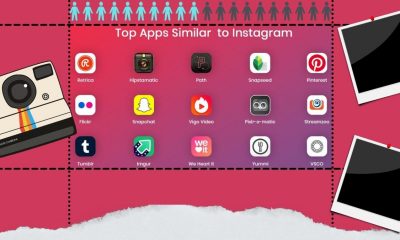Software Development
Healthcare Benefits Management Platform Trends
Collective Health, founded in 2013, offers employers a way to knit together various health benefits – medical, prescription drug, dental, vision, and other specialized offerings — on a single technology platform. Among its new investors is Health Care Service Corporation, a major seller of Blue Cross Blue Shield health plans, as an investor and business partner. HCSC’S self-insured employer clients will be able to opt-in to use Collective Health’s systems, giving them a complete view into what they pay for health care.
Collective Health Raises $280M in Funding
According to researcher CB Insights, globally, investors put $31.6 billion into healthcare ventures in the first quarter, a record high. The average size of digital-health deals jumped 45% from last year to about $46 million in the quarter, data from investment firm Rock Health show. Collective Health’s recent investments bring its total fundraising to about $720 million.
Health care “needs to become like anything else that you buy for the enterprise: a primary data driven-decision,” Ali Diab, Collective Health’s co-founder and chief executive officer, said in an interview. “Benefit leaders, finance leaders, and executives have not had the ability to make truly data-driven decisions in terms of what kind of health care they procure for their populations, and they need to be able to do that.”
Employers using Collective Health still rely on insurance carriers to contract with networks of medical providers. But the company takes over some functions that traditional health plan administrators perform, like claims processing and customer service. Collective Health also analyzes claims data to recommend treatment options to members.
The San Francisco-based company has more than 500 employees and serves about 300,000 members across more than 55 companies, Diab said. Customers typically have at least 1,000 employees and are self-insured. They pay the medical costs for their health plans directly and rely on insurance carriers only for administrative functions like contracting with doctors. Collective charges clients a per-employee-per-month fee for its service. Customers include Live Nation, Pinterest, and Red Bull.
HCSC, a 16 million-member insurer that operates Blue Cross Blue Shield health plans in Illinois, Montana, New Mexico, Oklahoma, and Texas, was searching for technology that would improve the experience of both clients and their plan members.
“Health care is rather fragmented today, so we were looking to eliminate the fragmentation and really try to make giant steps in terms of technological improvement in the minds of our members and employers,” said Kevin Cassidy, HCSC’s chief growth officer.
The deal with the insurer will accelerate Collective Health’s reach with large employers, said Mohamad Makhzoumi, who leads the Global Healthcare Investing practice at venture firm New Enterprise Associates, Inc.
NEA first invested in Collective in 2014. Diab had no customers or even a beta product at the time – simply “a really nice slide deck,” Makhzoumi said. Even with hundreds of thousands of members now, Makhzoumi said the challenge ahead for Collective Health is whether it can reach a scale needed to get the attention of the largest companies in the market.
Digital health startups can have trouble gaining traction with larger companies in the $4.2 trillion U.S. healthcare industry, he said. “It’s kind of like, wake me up when you have a million lives,” he said, adding that he believes Collective Health will get there. Today one company can use up to 20-30 digital solutions, and even this number is not always able to satisfy all the company’s needs and employees. We will not talk about the loss of time between switching applications and searching for information there. We support Collective Health’s approach that all data should be available from a single source. This approach allows you to save resources significantly, plus users are more willing to use such solutions since they do not need to remember a bunch of passwords and constantly log into different systems. The one-stop-shop solution is the most popular digital solution among enterprises. A multifunctional service unites all tools and resources in one place and provides access to workflow programs, task scheduler, video conferencing platform, staff training, and many other possibilities depending on the company’s needs. One of the main advantages of such a resource is user access to internal resources and tools from any device or anywhere globally, necessary for modern realities.
If your company already uses a dozen applications, think of a comprehensive tool like a custom OMNI portal. The solutions will take your business to the next level and open doors to new opportunities.
-

 Marketing Tips3 days ago
Marketing Tips3 days agoWhat is my Instagram URL? How to Find & Copy Address [Guide on Desktop or Mobile]
-

 Business Imprint4 days ago
Business Imprint4 days agoAbout Apple Employee and Friends&Family Discount in 2024
-

 App Development4 days ago
App Development4 days agoHow to Unlist your Phone Number from GetContact
-

 News5 days ago
News5 days agoOpen-Source GPT-3/4 LLM Alternatives to Try in 2024
-

 Crawling and Scraping5 days ago
Crawling and Scraping5 days agoComparison of Open Source Web Crawlers for Data Mining and Web Scraping: Pros&Cons
-

 Grow Your Business3 days ago
Grow Your Business3 days agoBest Instagram-like Apps and their Features
-

 Grow Your Business5 days ago
Grow Your Business5 days agoHow to Become a Prompt Engineer in 2024
-
Marketing Tips3 days ago
B2B Instagram Statistics in 2024







